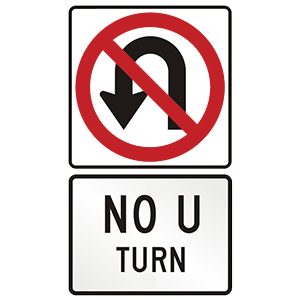2025 Minnesota Permit Test 23
The following questions are from real DMV written tests. These are some of the actual permit questions you will face in Minnesota. Each permit practice test question has three answer choices. Select one answer for each question and select "grade this section." You can find this button at the bottom of the drivers license quiz. For a complete list of questions and answers for Minnesota please visit https://cheat-sheets.dmv-written-test.com/en/minnesota/car.
Number of Tests
Number of Question
Passing Score
33. How do you check your blind spots?
Explanation
Blind spots are areas around your vehicle that you cannot see with your mirrors. Check your blind spots by turning your head and looking over your shoulder.
34. A motorist making a left turn at an intersection must yield the right-of-way to a bicyclist entering the intersection from the opposite direction.
Explanation
When turning left at an intersection, you must yield to oncoming bicycles in the same manner that you would yield to oncoming motor vehicles. Keep your wheels straight while waiting to turn and proceed when the way is clear of traffic and pedestrians.
35. How can you help prevent rear-end collisions?
Explanation
Stopping suddenly can make it difficult for drivers behind you to avoid a rear-end collision. When stopping, release the accelerator to allow your vehicle to slow. Press the brake pedal by applying steady pressure, activating your brake lights and causing the vehicle to stop smoothly.
36. When the road is marked with a solid yellow line and a broken yellow line, with the broken line next to your lane, you may pass:
Explanation
When there is a solid yellow line and a broken yellow line in the center of the road and the broken line is next to your lane, you may cross the lines to pass if there is no oncoming traffic.
37. This sign means:

Explanation
A regulatory sign displaying a red circle with a red slash through the middle indicates that a specific action is prohibited. U-turns are not permitted where this sign is posted.
38. When parking uphill on a hill or incline with a curb:
Explanation
To keep your vehicle from rolling into traffic when parked facing uphill, turn your front wheels sharply away from the curb. If you are parking uphill on a street that has no curb, turn the wheels sharply toward the edge of the road.
39. When a stop is required at an intersection and no markings appear to indicate a stop line or crosswalk, a driver:
Explanation
If there is no stop line or crosswalk, you should stop at the point nearest to the intersecting roadway where you can get a view of approaching traffic. You should not enter the intersecting roadway to gain a better view.
40. If two vehicles arrive to a four-way stop at the same time:
Explanation
